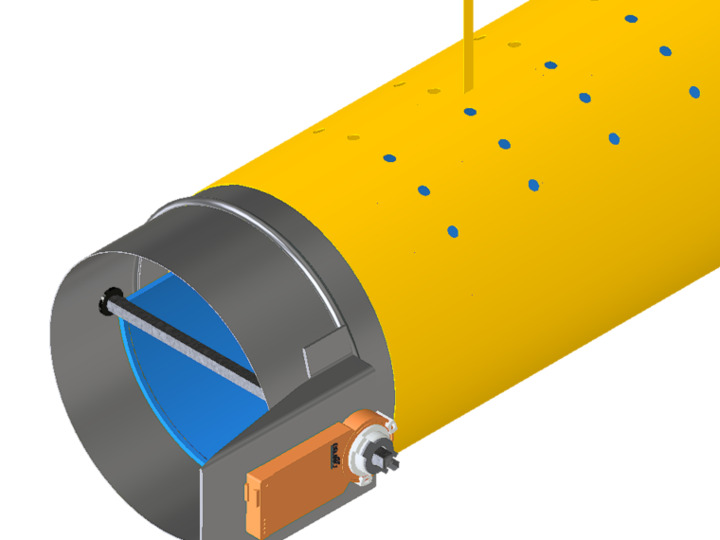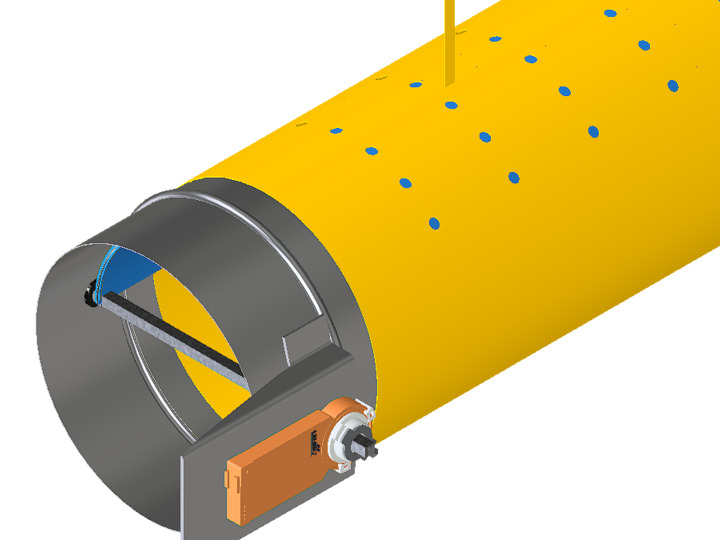Summer/Winter Membrane Systems for Textile Ducts
Our summer/winter membrane systems are an innovative solution that enable efficient regulation of supply air temperature all year round, ensuring both thermal comfort and energy savings.
The system allows the duct operation to be adjusted to changing weather conditions and user needs by controlling the membrane position via a throttle – either manually or with a servomotor (e.g., Belimo). This makes it ideal for facilities that require stable comfort throughout the year, while reducing operating costs and improving the overall energy efficiency of the ventilation system.
Key Benefits of the Summer/Winter Membrane System:
-
Seasonal adjustment of the duct depending on summer or winter conditions
-
Enhanced thermal comfort for users
-
Reduced energy losses and lower heating/cooling costs
-
Membrane position controlled via throttle – manually or with an actuator (Belimo)
-
High durability and resistance of the membrane to operational conditions
Thanks to this system, textile ducts become even more versatile and efficient, meeting the expectations of even the most demanding investors.
The membrane is made of an light impermeable fabric and is fully removable. It is mounted to the throttle on one side and connected to the end cap of the textile duct on the other.
For optimal reliability, we recommend a duct length of L ≤ 25 × D, where D = Ø160–Ø800 mm. Custom solutions for longer ducts or different diameters are also available upon request.







